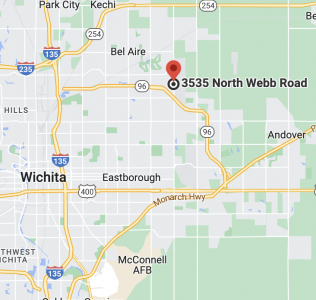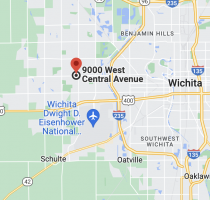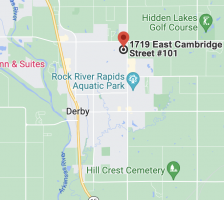Dr. Wassim Shaheen–Is It Time To Say “Goodbye Warfarin”?
Vitamin K antagonist, warfarin, has been the main oral anticoagulant until recently. It is indicated for the prevention and treatment of venous thrombosis as well as thromboembolic complications associated with several conditions as atrial fibrillation, deep vein thrombosis, pulmonary embolism and metallic valves. Initiation of warfarin therapy is challenging, given the poor prediction of its pharmacodynamic response. Also different indications require different INR targets. This is summarized in table one.
Table 1
| Indication | INR |
| Treatment of DVT and PE | 2-3 |
| Pophylaxis for DVT ( high risk surgery) | 2-3 |
| Prevention of systemic embolism:Tissue valveAtrial fibrillation
Valvulardisease |
2-3 |
| Bileafletmechanicl aortic valve | 2-3 |
| Metallic mitral valve | 2.5-3.5 |
| Mechanical aortic valve ( high risk) | 2.5-3.5 |
| Recurrent systemic embolism | 2.5-3.5 |
Furthermore, INR may become supra therapeutic and hence necessitates the administration of vitamin k, PCC and sometimes FFP. Management summary is shown in table two.
Table 2
| INR | Clinical scenario | Management |
| 3.1-5 | No bleeding | Adjust warafrin dose |
| 5.1-9 | No bleeding | Adjust warafin dose |
| 5.1-9 | No bleedingNeed reversal for surgery | Vitamin k 2-4 mg orally |
| 9.1-20 | No bleeding | Vitamin k3-5 mg orally |
| 9.1-20 | No bleedingNeed reversal for surgery | Vitamin k 10 mg IVFFP or PCC |
| 9.1-20 | Bleeding | Vitamin k 10 mg IVFFP or PCC |
| >20 | Vitamin KFFP or PCC |
Recently novel anticoagulants (NOAC) have been approved by FDA as a substitute to warfarin. These are Pradaxa, Xarelto and Eliquis. All are approved for prevention of thrombosis and systemic embolization in the following conditions:
- Non-valvular atrial fibrillation
- Prevention of DVT and PE in high risk surgeries ( i.e. hip and knee surgery)
- Treatment of DVT and PE
None of these agents have been approved for prevention of thrombosis in metallic valves and hence should not be considered irrespective of the situation. Also when we review the data, please do remember that none of these agents were studied “ head to head” but rather they were compared to warfarin in double blinded trials.
The following tables summarize the main studies that lead to FDA approval of these three agents in non valvular atrial fibrillation patients.
I. Oral anticoagulants:
| Warfarin | Pradaxa(Dabigtran) | Xarelto( Rivaroxaban) | Eliquis( Apixaban) | |
| Mechanism | Direct thrombin inhibitor | Direct factor X inhibitor | Direct factor X inhibitor | |
| Bioavailability | 6.5%(PH sensitive, prodrug) | >80% | >50% | |
| Plasma Half life | 12-14 hr | 9-13 hr | 8-15 hr | |
| Renal elimination | 85% | 33% | 27% | |
| Protein binding | 35% | 95% | 87% | |
| Dialysability | Yes | unlikely | unlikely | |
| Dosage | 150 mg BIDor75 mg BID | 20 mg dailyor15 mg daily | 5 mg bidor2.5 mg BID | |
| Antidote | Vitamin KFFP | None | None | None |
II. Main Trials:
| Warfarin | Pradaxa | Xarelto | Eliquis | |
| Trial | RE-LY | ROCKET AF | ARISTOTLE | |
| Patient number | 18,113 | 14,264 | 18,201 | |
| Median follow up | 2 yr | 1.9 yr | 1.8 yr | |
| Dose | 110 & 150 mg BID | 20 mg QD | 5 mg BID | |
| Renal adjustment | None | 15 mg QD | 2.5 mg BID | |
| CHADS score | 2.2 | 3.5 | 2.1 | |
III. Outcome:
| warfarin | Pradaxa | Xarelto | Eliquis | |
| Trial | RE-LY | ROCKET AF | ARISTOTLE | |
| Primary outcome RRR | 35%* | 21%* | 21%* | |
| Hem. Stroke RRR | 74%* | 41%* | 49%* | |
| Ischemic stroke RRR | 24%* | 6% | 8% | |
| CV death RRR | 15%* | 11% | 11% | |
| All death RRR | 12% | 15% | 11%* | |
| MI RRR | INCREASED 27% | 19% | 12% |
IV. Bleeding:
| Warfarin | Pradaxa | Xarelto | Eliquis | |
| Trial | RE-LY | ROCKET AF | ARISTOTLE | |
| Major bleeding RRR | 7% | Increase 4% | 31% * | |
| ICH RRR | 59%* | 33%* | 58%* | |
| GI bleeding RRR | Increase 48% | Increase 46% | 11% | |
| All bleeding RRR | 9%* | Increase 3% | 32%* | |
These trials show that these agents are equivalent if not superior to warfarin in prevention of stroke in patients with non valvular atrial fibrillation. However Pradaxa has increased risk of bleeding especially in those who are older than 75 years. Also the Re-LY trial showed slight increase risk of MI. On the other hand Xarelto, though has increased risk of bleeding, it is once a day dose and may improve compliance. Eliquis has probably the least risk of bleeding compared to warfarin and the only one that showed reduced mortality. So keep in mind that these agents need to be withheld prior to any elective surgery. This final two tables summarize the time needed to hold medication prior to surgery and dosage of these agents based on patient’s clinical scenario.
V. Dosage:
| Medication | Disease | Dosage |
| Pradaxa | Non Valvular atrial fibrillation | 150 mg BID unless CrCl 15-30 ml/min then 75 mg/dl.Contraindicated if CrCl< 15 ml/min |
| Pradaxa | DVT/PE prophylaxis | 150 mg BID unless CrCl less 30 ml/min then no dose recommendation is available. |
| Pradaxa | DVT/PE treatment | 150 mg BID unless CrCl less 30 ml/min then no dose recommendation is available. |
| Xarelto | Non Valvulara atrial fibrillation | 20 mg once a day unless CrCl 15-50 ml/min then 15 mg once day ( Preferably with evening meal) |
| Xarelto | DVT/PE prophylaxis | 10 mg one a day ( 12 days for knee and 35 days for hip) |
| Xarelto | DVT/PE treatment | 15 mg BID for 21 days then 20 mg once a day |
| Eliquis | Non Valvular atrial fibrillation | 5mg BID unless 2/3 met then 2.5 mg BID( age >80 yr, wt<60 kg or r >1.5) |
| Eliquis | DVT/PE prophylaxis | 2.5mg BID ( 12 days for knee and 35 days for hip) |
| Eliquis | DVT/PE treatment | 10 mg bid for 1 week then 5 mg BID |
*Be aware of mediation interaction with these agents that affect dosage administration
VI. Time to hold NOAC prior to elective surgery:
| Medication | Duration held |
| Pradaxa | 1-2 days if CrCl>50 ml/min3-5 days if CrCCl 15-50 ml/min |
| Xarelto | At least 1 day |
| Eliquis | 24 hours f low risk surgery for bleeding48 hours if high risk surgery for bleeding |









